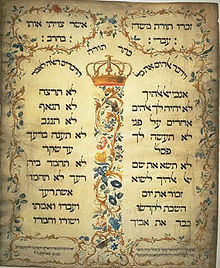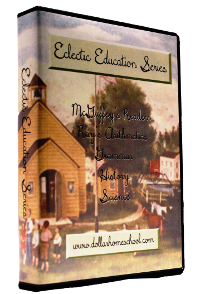 |
| My little girl makes a basket! |
So what is a good homeschooling mother to do?
Instead of fighting with nature, I capitulate and help them along! Here are some of the ideas I have come up with for taking advantage of these months. I have decided to concentrate on thinking and math skills in anticipation for our next round of "formal" academics.
1. Wake up time is instruction time. We are using that half-hour that it takes to completely recover one's consciousness for good. Besides reading through a creation science devotion, I also continue to read through the Good Morals and Gentle Manners book which was created for the Eclectic Education Series. Then I also read a testimony about praising and thanking God continually in Merlin Carother's Power in Praise. Within this time, we will be learning the Hebrew Aleph Bet, and then pursuing that language more as time goes on.
2. Brain-training. I was recently handed a book from Learning Rx entitled Releasing the Einstein Inside. A lot of what I read made sense to me, so I have begun to use a few of their suggestions with my children, getting them to exercise their higher mental functions, etc. There are all sorts of free resources on this site.
 3. Math games. These are so fun for my gang, but so very simple and cheap! Here are a few favorites:
3. Math games. These are so fun for my gang, but so very simple and cheap! Here are a few favorites:
Buzz. The idea of this one was taken from a vintage book of diversions for young ladies. Everyone sits in a circle, and one person begins by saying the number "1", then next person says the next number, and so on around the circle. When any multiple of 5 or the number 5 is reached, the person must remember to say "Buzz" or pay a forfeit (when the number "55" is reached, then the person must say "Buzz, buzz" and so on). The forfeit is paid by having the offender turn his back to the room, while the gestures of a kiss, a pinch, and a hit are made, in any order (switching up the order each time makes it more fun) by the appointed leader. The offender then says either 1, 2 or 3, and then receives whichever gesture corresponds with the number he has chosen (for instance, if he chose the letter "1", and the first gesture made was a kiss, then he would receive a kiss, and so on).
The multiples can be changed, such as multiples of 6, 7, 8, etc. My children love this so much that they play it whenever they are needing to pass the time, such as in the car during errands, etc.
Toss. This one requires only a small stuffed toy or ball. A number of children sit in a circle and pass the object back and forth while saying their addition, subtraction, multiplication or division tables. If the object or ball is dropped, they have to start all over again.
War. This site has all that one ever needs to know about how to make the best of this simple card game.
Measuring scavenger hunt. My children really get into this one. You will need a kitchen scale and measuring stick, if you have a number of children, you may need multiples!
You simply make a list of things that need to be found--something that weighs exactly 8 oz., or you could say 1/2 or .5 lb., something that weighs 13 oz., etc. Also, have them find things that measure exactly 3 and 1/4 inches, or 18 cm., etc. The fun of discovering just how to estimate the weight or length of something really grabs their attention.
Find the distance. Give them an atlas and a measuring stick and have them calculate the distances "as-the-crow-flies" from one international city to another.
Candy fun. Take a huge bag of either M & M's candies or Skittles and have the children estimate the total candies in the bag, separate and count the various colors, tell the average number of each color, use division to evenly distribute the candy among family members, etc.
After helping the children



















































